After the Coup: An Interview With Peter Kornbluh, Part II
How Kissinger and the CIA bolstered the regime of Augusto Pinochet for years—until they couldn’t.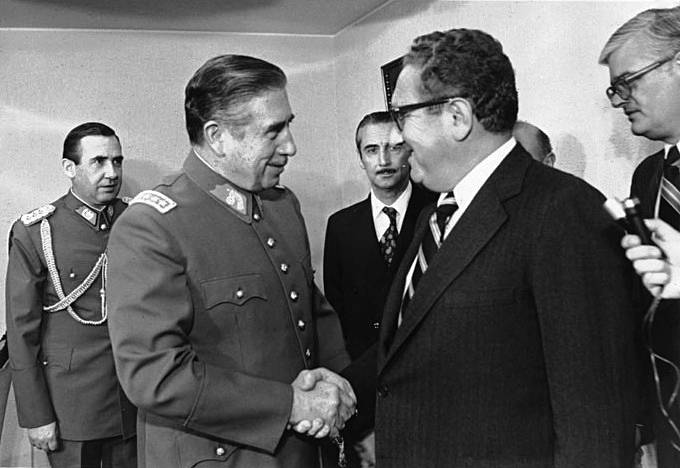 Henry Kissinger and Augusto Pinochet in 1976. (Photo: Archivo General Histórico del Ministerio de Relaciones Exteriores)
This is Part of the "Chile’s Utopia Has Been Postponed" Dig series
Henry Kissinger and Augusto Pinochet in 1976. (Photo: Archivo General Histórico del Ministerio de Relaciones Exteriores)
This is Part of the "Chile’s Utopia Has Been Postponed" Dig series
Last week, Truthdig published the first half of my interview with historian Peter Kornbluh on the sordid history of Henry Kissinger and the CIA in the 1973 coup of Salvador Allende. In the second half of the interview, Peter details the CIA’s role following Pinochet’s seizure of power; the rise of Chile’s death squads in international terrorism; the car bombing of Orlando Letelier on American soil; and how the U.S. eventually tired of Pinochet and helped push him from power.
Peter has been researching Chile at the National Security Archives at George Washington University for more than three decades. I served as translator to Salvador Allende during his brief presidency and escaped Chile eight days after the 1973 coup.
MC: Pinochet takes power on the same day of the September 11, 1973 coup and immediately establishes an atmosphere of bloody terror to usher in what will become an iron dictatorship. The most intensive killing takes place from the outstart with the abolition of all civil liberties, abolition of Congress and all political parties, the shelling of universities and here and there a body or two floating down the Mapocho river in downtown Santiago. So begins the still unresolved issue of human rights abuses in Chile. How does the U.S. initially deal with this inconvenience?
PK: I think everybody should understand that the human rights movement — as we know it today, as it exists in the United States of America today — began with Chile.
It began with people, some people like yourself, people you knew leaving after the coup, escaping with their lives, going back to Washington, and absolutely appalled that the United States had played a role in overthrowing Allende, and even more appalled that Kissinger and Nixon and then Gerald Ford were actually embracing this bloody military dictatorship that was killing all these people.
People like Joseph Eldridge, who’d been in Chile, started the Washington Office OnLatin America. He and others started the first kind of advocacy to make human rights a criterion of U.S. foreign policy. They enlisted wonderful young congressmen into the cause.
And more than calling attention to human rights violations those advocates worked with Congress to pass a series of laws that would restrict the U.S. ability to support regimes that engage in a systematic pattern of human rights violations as the Pinochet regime was doing.
I call these the “Kissinger-Pinochet” laws because if Kissinger hadn’t stubbornly just embraced Pinochet, no matter what, and had shown just a modicum of sensitivity to the issue of people being slaughtered and tortured and disappeared, those laws might never have been passed. But Kissinger took the opposite position, which was that he should have complete impunity in foreign aid, giving economic and military aid to whatever government he wanted. He actually told his own ambassador to Chile, “Stop with the human rights lectures.” He literally wrote this in the margin of cables that were coming from Chile reporting on human rights atrocities. “Stop it with the human rights lectures.”
MC: And this is even as it has become clear that the regime had murdered two U.S. citizens, Frank Teruggi and my friend Charlie Horman, the central figure in the Oscar-winning Costa-Gavras film “Missing.” A lot of people who followed the Chile issue, myself included, were very grateful for the movie, because it brought Chile front and center. But it also suggested a conspiracy of sorts, beginning with Charlie going to Valparaíso and knowing too much about U.S. Navy maneuvers and that he might have said too much to the U.S. military attache, Ray Davis, who happened to give him a ride back to Santiago.
Make no mistake. I know the U.S. did next to nothing to find him when he went missing and, in 2002, I gave testimony against the U.S. Consul to the Chilean judge overseeing Horman’s murder case. But I did not buy the conspiracy theory that the U.S. was complicit in his murder. Indifferent, for sure. But not hands-on. What role do we think the CIA/U.S. government had, if any, in his murder? Not about the cover-up, the murder, the arrest, the reasons — do you think they had anything to do with it?
PK: You should know that one of my first paid jobs in Washington, in the early 1980s when I was young, was being hired by a lawyer named David Kendall.
MC: He later became famous for defending President Clinton in the Lewinsky case.
PK: After the movie “Missing” came out, the U.S. officials, including the ambassador and the U.S. Consul General that you, Marc Cooper, testified against, Frederick Purdy, and the military attaché Ray Davis who gave Charlie a ride, all sued Universal Studios and Costa-Gavras for the alleged malicious depiction of them in the movie.
MC: I thought they got off easily, but go ahead.
PK: And interestingly enough, the movie depicted them, I think accurately, they were gross…
MC: Callous and indifferent.
PK: Callous, indifferent, malicious. Cruel.
MC: I can testify to that.
PK: Yeah, you can testify to that. And you did testify to that! You knew those Embassy officials; you dealt with them personally.
MC: Unfortunately. Purdy refused me and some friends any protection and basically kicked us out of the consulate. This was six days after the coup. Coincidentally the same day Horman was grabbed.
PK: These officials abused the Americans that were here, as you know, and they abused their families– Charlie’s father, who was a Republican businessman, who unlike you and some of the others your age, was very established, very wealthy and absolutely irate that he and his family would be treated this way by the government that he had voted for. And Frank’s family also.
But the overall presentation of them in the film, strongly implied that they were covering up or even directly involved in the executions of Horman and Teruggi in the days following the coup 50 years ago. The movie doesn’t say that directly but is very suggestive in that direction.
“Missing” is an enormously important movie…It’s the movie that in some ways instilled in the consciousness of the American public the horrors that happened in Chile.
They all sued Universal Studios and Costa-Gavras. The studio hired David Kendall to defend them. Kendall’s legal strategy was to press the U.S. government for disclosure of secret documents on what the U.S. role in the coup really was.
So I did this whole dossier and set up for Kendall, and he managed to negotiate an apology from Universal Studios to these officials, which basically said that they weren’t intended to depict them as real people, even though obviously they were. And somehow this apology ended that whole process. But this is all to say that from the very beginning, there was pushback against the movie in an argument made by the very people who were depicted in it, that it could be and should be interpreted differently.
And even though the movie is accurate in its factual presentation — Charlie was out in Valparaíso and the coup did start there with the Chilean Navy and he did meet U.S. personnel there — interpretations of the facts of a U.S. role in their deaths appear to have no evidentiary base. A pivotal scene in the movie depicts a former Chilean intelligence agent named Rafael Gonzalez, who has taken refuge in the Italian embassy to flee Chile, telling two U.S. reporters that the night of Horman’s detention, he had been called to a military office to interpret during Horman’s interrogation and that there was an American present–Gonzalez said could tell he was American from the type of shoes the guy wore. Gonzalez said he was told Charlie had to disappear “because he knew too much.”
That is a true scene; the movie makes it appear that it took place shortly after the coup but it actually took place in June of 1976, after Gonzalez and his wife and young son had been holed up in the Italian embassy for over two years. One of the reporters, Joanne Omang of the Washington Post, wrote two stories about that interview–one was titled “The Man Who Knew Too Much,” which ignited a major scandal over whether the U.S. had been involved in Horman’s murder and set off an internal investigation in the U.S. State Department. It also prompted a New York lawyer named Thomas Hauser to write a book, The Execution of Charles Horman: An American Sacrifice, on which the movie “Missing” is based.
The problem is Gonzalez’s story kept changing when investigators talked to him; eventually after he succeeded in leaving Chile, he recanted the story completely. I spent several hours interviewing him and his now adult son, and believed his argument that he had been pressured by Italian Embassy officers to find a way to call attention to himself so that the Pinochet regime would be forced to grant him safe passage to leave Chile.
MC: So as we sit here today, is there no substantial evidence, there’s really no evidence at all, that the CIA or the U.S. government writ large, had anything to do with the original detention and murder?
PK: A lot of foreigners were targeted for detention and death following the coup–as you know from personal experience in your effort to escape from Chile. I want to take this opportunity to tell you that I am so grateful that you managed to get out alive.
“Missing” is an enormously important movie, an incredibly fine movie. It’s the movie that in some ways instilled in the consciousness of the American public the horrors that happened in Chile.
Fifty years later, there are still many unresolved questions about the detention and execution of Horman and Teruggi. Why were they singled out, detained and killed? Who ordered their executions? Acting on a legal complaint filed by the Horman and Teruggi families 23 years ago, a Chilean judge did indict and convict several ranking Chilean military officials–including Gonzalez–and implicated the head of the U.S. military group, Captain Ray Davis, in the death of Charles Horman. But the judge offered no actual evidence of any kind of what his role was. The fact that U.S. officials such as Davis, and the ones you dealt with, were supportive of the coup, and even sympathetic to the repression that followed, makes them accomplices to what happened in Chile on September 11, 1973 and thereafter. But it is not evidence of direct involvement in these two heinous crimes that took the lives of U.S. citizens.
They were, of course, implementing Henry Kissinger’s criminal, immoral policy to actively support the consolidation of the military regime, and to refuse to, as he put it, “harass” Chile about human rights atrocities. When his top aides informed him of the mass slaughter in the days following the coup, this was Kissinger’s actual response: “I think we should understand our policy–that however unpleasant they act, this government is better for us than Allende was.”
MC: Yes, back to Kissinger and the military junta…
PK: You have Kissinger meeting Pinochet’s representatives in 1975 at the height of the disappearances. In fact, the U.N. wants to send a human rights delegation to Chile, and Pinochet cancels it at the last minute, which leads to a huge international uproar.
And what happens? Pinochet sends his foreign minister, Patricio Carvajal to talk to Kissinger — we have the declassified memorandum of conversation of the meeting — and he starts the meeting by joking around with Pinochet’s representative saying, “You know, for this meeting, my aides gave me these briefing books and they were just filled with stuff about human rights.” Kissinger appears to be almost apologetic. He told Carvajal: “The State Department is made up of people who have a vocation for the ministry. Because there are not enough churches for them, they went into the Department of State.”
MC: Is that a direct quote?
PK: Yes, it is. Then they both, like, laugh about this because Kissinger is disparaging his own deputies to the representative of Augusto Pinochet, whose name has become synonymous with gross violations of human rights. That was in February 1975.
By 1976, when the Kennedy-Harkin amendment on aid and arms to Chile is about to pass, the Organization of American States decides to hold a meeting in Santiago. I’ll never understand how this happened. I really will never understand how this happened.
Kissinger is due to come to Santiago and make a speech in which he’s going to be forced to actually talk about human rights. So what does he do?
Pinochet was a complete pariah in the entire world. There was no place that would receive him, except the countries of other military regimes and dictatorships.
First of all, he gets briefed by his top deputy William D. Rogers, the assistant secretary of state for Inter-American Affairs — not to be confused with Nixon’s Secretary of State William P. Rogers — is a close Kissinger friend and ally, and later becomes his personal lawyer after they both leave office. But he gets these briefing papers basically saying, “You can’t give any platitudes to Pinochet because he will interpret those as your support. You have to be very clear that we support a return to democracy, that we want to see an end to human rights violations, and that this is completely screwing up our relationship.”
So what does Kissinger do? He goes in to meet with Pinochet before he gives the speech.
This is the one face-to-face meeting between Kissinger and Pinochet. It’s on June 8, 1976, and we have the declassified memorandum of conversation, which we got many years later which, by the way, was written from the notes taken by that very individual, Assistant Secretary of State William D. Rogers.
We first learned about the meeting from Kissinger’s memoirs in which he has a whole chapter that ends with his description of this meeting.
MC: Which is completely false, right?
PK: Yes. In his memoirs, he says, “I went in, I met with Pinochet, I pushed the issue of democracy, I told him he really needs to stop violating human rights.”
So years after the memoir comes out, we get the actual declassified memcon of the meeting where Kissinger never mentions the word democracy once and only mentions the term human rights in terms of briefing Pinochet that he’s being forced to talk about human rights by the U.S. Congress.
MC: He disses the Congress, doesn’t he, to Pinochet.
PK: Yes. He comes in and says, “Gen. Pinochet, I wanted to meet with you because I’m being forced to give this speech on human rights and I wanted to tell you the speech is not about you. I believe that you are a victim of left-wing propaganda around the world and that your only crime was overthrowing a government that was going communist. You did a great service to the West in overthrowing Allende and we want to help you, not hurt you.”
These were the platitudes. This was really what Kissinger said. Then there were all these photographs that were taken of him smiling and shaking Pinochet’s hand, leaning in and talking to the general.
By that time, Pinochet was a complete pariah in the entire world. There was no place that would receive him, except the countries of other military regimes and dictatorships.
Pinochet did come to Washington for the Panama Canal signing with all the other military and Latin American leaders. But besides that, he was denounced and rejected and condemned all over the world. And here is Henry Kissinger, arguably the most famous diplomat in the entire world, yawping it up and kissing his ass and shaking his hand and then, in private, basically saying to him, “Don’t worry about what I’m saying publicly. We want to help you, not hurt you.”
MC: Well, he was also saying, “Don’t pay attention to what I’m saying,” but he is also saying, “Don’t pay attention to these jerks in the U.S. Congress, either.”
PK: Right. You know, something very interesting happened at this meeting, which is that two times Pinochet raises the issue of Orlando Letelier — perhaps the highest profile exiled Chilean dissident living in the U.S. — who Kissinger knows because Orlando had been Allende’s ambassador to Washington, and he had been credentialed by Henry Kissinger at the time at the White House. They knew each other. They talked, and Pinochet raises Letelier’s activities — basically says he’s lying. And somebody should shut him up. Basically saying, “What could be done to stop him from spreading all these false things about us?” And Kissinger has the opportunity to say, “Well, you know Mr. Pinochet, what I can tell you is that he is correct. The intelligence reports I get is that everything he’s saying about your human rights violations is correct, and obviously, you’re not returning to democracy.”
MC: There are a hundred things he could have said.
PK: Sure, there are a lot of things. And instead, he says nothing. So there’s this kind of silence. And the fact that Pinochet is raising Letelier’s name pointedly is very suggestive. He’s feeling Kissinger out.
MC: Is it okay to knock this guy out? I mean…
PK: You know, that sounds very rhetorical and very conspiratorial, but I truly believe that that’s what that is. And it is right at that time that Pinochet decides to give an order to DINA, the Chilean secret police, to begin preparations for an assassination mission to assassinate Orlando Letelier. Now, there’s something else you should know: This meeting with Kissinger takes place on June 8, 1976. The OAS has gathered in Santiago. But because this is all happening, Pinochet and the Chilean secret police have taken the opportunity to call together the Condor countries at almost the same time.
MC: The Condor countries were comprised of the military dictatorships in the “Southern Cone” region of South America coordinating to liquidate their opponents.
PK: All the Southern Cone countries, all under military rule were being organized by Chile to coordinate slapping down and exterminating those leftists who have managed to get out of each of their country and into other countries. Or even have spread out into Europe and the United States.
As is the case with Orlando Letelier. And at this meeting, which takes place the last days of May and the first days of June of the Condor nations. Chile, Uruguay and Argentina basically take the lead in organizing something called “Plan Theseus” after the Greek god Theseus, who slayed the Minotaur. And this was the image that these guys wanted.
MC: Sick.
PK: And the CIA, it turns out, intercepts, or is given a Spanish version of the plan. The entire 10-page bureaucratic, logistic and banal plan of how this multinational death squad operation is going to work. It includes the daily budgets for assassination missions, how countries would propose who would be bumped off, and how they would have to recruit women to be part of the assassination team so the assassins could pose as a married couple. Those women would have an extra $1,000 to buy clothes so that they would look the part. And how each country had to pay their $200 dues on the 30th of the month.
And that Argentina would be the headquarters of this particular part of operations. It all came out in the Argentina documents in 2018. So just a few years ago. And many, many years after the CIA learned this.
MC: Just to detail, this document is written by who? By the council, by a committee of the Condor nations?
PK: By the Southern Cone intelligence chieftains. A real Southern Cone ‘Murder Inc.’ And the CIA finds out about the plans to build the Theseus program, and about the first kind of nominated targets, who happened to be in France.
Some people want to think that the CIA was all for it, but they weren’t. But, in 2018 with all these documents that came out as part of a declassification diplomacy gesture that began under the Obama administration and was finalized during Trump, these extraordinary intelligence documents show that the head of the CIA’s Western Hemisphere division and covert operations division was frantic that these Southern Cone intelligence services were going to send death squad teams to European countries like France.
They were going to kill people on the streets of Europe. And then the French intelligence service, which was critical to the CIA’s liaison collaboration work in Europe against the Russians and NATO and all that, would say to the CIA, “Aren’t these your guys? Did you know about this?”
So you get these alarmist cables going all the way to the top of the CIA and beyond saying, “We can’t let this happen. We can’t let these Condor nations run around in allied European countries killing people because we’re going to get blamed. It will be a huge scandal. And the fact is we do know about it in advance and we’re seen as these being our guys.”
MC: But was this concern before or after the killing of Letelier?
PK: No, it’s before. And, in fact, the CIA quietly sends a representative to talk to the French government. The CIA essentially intercedes to thwart the first Plan Theseus Condor assassination plots in Europe and successfully undermines them. The targets are warned, and they disappear. And when the Condor team gets there, they can’t find them.
So this basically changes the dynamic, because the Condor intelligence services realize that somebody has sold them out, that they’re leaking like a sieve, and that maybe it’s not a good idea to have a bunch of people gather, nominate targets to be assassinated, have these teams run all over the world.
And truth be told, the Chileans, the DINA secret police, realize that if they’re going to kill Letelier, they better not tell a bunch of other intelligence services because some of them are actually reporting to the CIA what they’re doing. When they undertake the plot, they do use a Condor mechanism. The Condor countries have agreed that they’ll provide false papers, false visas and passports to various agents going on missions.
In the case of Letelier, two Chilean agents are sent to Paraguay, and DINA Chief Manuel Contreras asked the Paraguay intelligence to arrange for them to have false visas given to them to go to Washington. He doesn’t tell them what they’re going to Washington for. And there’s some implication in later CIA documents that the Paraguayans are very angry that this has happened. So the Paraguayans put in a request to the U.S. ambassador to provide visas and he gets presented with these false passports, which he copies. He meets with these Chilean agents and says, “Why do you want to go to the United States?” And the story is, they have a meeting with Deputy CIA Director Vernon Walters. They won’t actually say what it’s about.
So our ambassador copies the passports and the visas and sends an alert to Washington that these very two suspicious agents are coming and he doesn’t believe their story and says that Vernon Walters should be alerted. And Walters is in the process of retiring from the CIA. He claims that he was alerted but since he was retiring, what was he going to do?
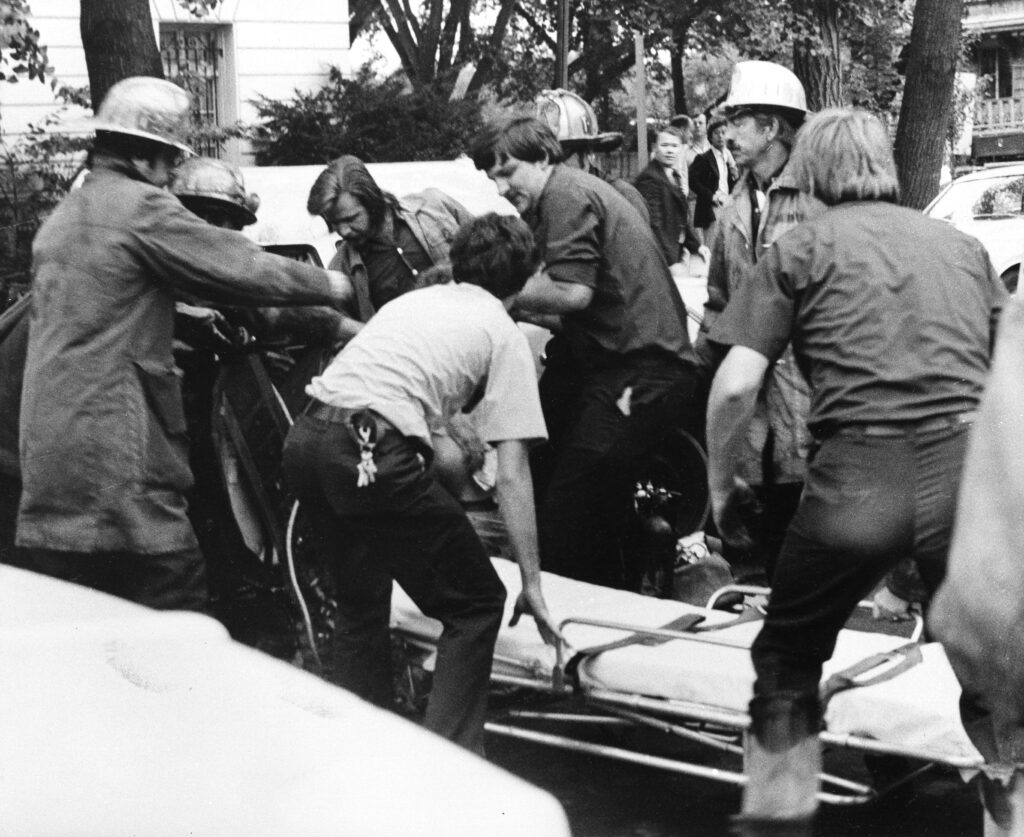
And somehow this never spreads. These two guys get into the United States not coming from Paraguay, but actually coming back into Chile and flying from Chile. They conduct surveillance on Letelier. Eventually, they participate in killing Letelier. And the Letelier assassination takes place on Sept. 21, 1976, using a car bomb in Sheridan Circle in Washington.
But before Letelier is killed, there’s a whole sequence of events. They’re very important. The CIA in late July of 1976 sits down with the State Department and says, “We’re going to share with you what we know about these Condor guys. They’re running around the world trying to kill people. And probably not a good idea.”
And there are some very conscientious aides to Kissinger, one of them is Hewson Ryan, very conscientious. And the other is William Luers. And they say, “We have to stop this from happening. These guys are going to embarrass us. There’s no way that they can go around killing people this way. And it won’t impede our ability to build any positive relations with them. We’re trying to fight the Kennedy Amendment and send aid to these countries anyway and we’re not going to be able to do it. And so we have to send them a message that they shouldn’t do this.”
So State Department official Henry Shlaudeman says, “Okay, well write a démarche.” So they write up a démarche, and it gets discussed. It gets transmitted in mid-to-late August to all the main Condor nations. The U.S. Embassy in Chile, the U.S. Embassy in Argentina and the U.S. Embassy in Uruguay and all three of the ambassadors in those countries are basically told to go to the heads of state here in Chile. That means the U.S. ambassador going to meet with Gen.Pinochet. In Argentina, it means Ambassador Robert Hill meeting with Gen. Videla. And in Uruguay, it’s still a junta, military leaders. And this démarche, which is very well written, basically says, “We support you fighting against the left. We’re willing to offer you more security assistance and intelligence sharing so you can fight the left. But you can’t go around killing people abroad. That’s not a good idea. And we just want to make it clear to you that we know that you’re thinking about doing this, and you shouldn’t do it.”
Now, this démarche literally arrives in Chile about four weeks before the Letelier assassination. This is the most… I have to say, I’ve worked on a lot of cases. I knew Rodrigo Rojas when he was a kid, that was just earth-shattering, his death. But the tragedy of the fact that the United States government set in motion a series of efforts that would have, I fully believe, forced the Chileans to abort the Letelier assassination and then did not follow through, is just mind-boggling and heartbreaking. And frankly, the fault of one person: Henry Kissinger.
But let me just explain to you how this happened, because it’s just an incredible story. This démarche comes down to Chile, Argentina and Uruguay.
The first thing that happens is our ambassador in Chile at the time, David Popper, read this démarche, and there were his instructions: “Please deliver this démarche personally to Pinochet.” (Editor’s note: A démarche is a formal diplomatic protest from one nation to another.)
Popper writes back and says…we have the cable that he sends back. “I believe that Gen. Pinochet will be personally offended if I suggest to him that he’s assassinating people around the world.”
MC: Yeah, well, for heaven’s sake, yeah.
PK: I mean, mind you, Pinochet’s secret police have already blown up Gen. Carlos Prats and his wife Sofia — incinerating them in a parking garage in Buenos Aires, murdering them in cold blood with a car bomb in September of 1974. In September of 1975, a DINA assassination team went to Rome to try to kill Bernardo Leighton, the exiled vice president of the Christian Democratic Party, showing perfectly well that this is not about killing leftists. It’s about killing anybody who could conceivably be an opposition leader to the regime. And countless other coordinated disappearances and murders.
So the American ambassador in Chile says, “I suggest that you rescind my instructions that I delivered this démarche to Pinochet and that we send Stuart Burton, the CIA station chief, to talk to DINA secret police director Manuel Contreras.” Well, so this cable comes back, and it’s now late August of 1976. It’s like vacation month in Washington. And it takes the U.S. official a few days to actually sit down and start to talk about this response.
Then, there is the document that I obtained via the Freedom of Information Act to try and find out what really happened. The U.S. Ambassador to Uruguay, Ernest Siracusa, writes back, and he says, “I also don’t want to deliver this démarche to the military junta. Do you know why? Because they’ll kill me. My life will be threatened and be in danger. I’ll no longer be able to safely… I’ll have to be looking over my shoulder.”
And only Robert Hill, our then-ambassador in Argentina, writes back and basically says, “I set up a meeting for September 20th with then-dictator General Jorge Rafael Videla to share with him this information.” And Assistant Secretary of State for Inter-American Affairs Harry Shlaudeman — William D. Rogers’ successor, serving under President Ford — finds himself in a pickle. He’s got two of the three ambassadors, both resisting delivering the démarche. And so he writes a memo to Kissinger, which is a memo that I obtained under the Freedom of Information Act many years later.
He writes this memo dated Aug. 30, 1976, and it’s titled Operation Condor. And it’s for Kissinger. And he basically is reporting on Ambassador Siracusa’s objections. And he says, “How shall we handle this? Should we take his proposal? Shall we reiterate to him that he should go talk to Foreign Minister Juan Carlos Blanco, in Uruguay and deliver the démarche? Should we have the CIA guy in Uruguay do it, or should I go talk to the Uruguayan ambassador here…” This was Siracusa’s recommendation. “Why don’t you go to Washington and deliver the démarche to Uruguay’s ambassador there, because you have all this protection. You’re in a safe city. They won’t kill you.”
This is the operative thing that he says to Kissinger. He reminds Kissinger, “What we are trying to head off is a series of international murders that could do serious damage to the international status and reputation of the countries involved.”
So he asks Kissinger basically to authorize him to write back to Siracusa and say, “We understand your concerns, but we’re still ordering you to deliver the demarche as we originally said.” And instead, what happens? Kissinger writes back and he cancels the entire thing.
MC: The démarche?
PK: The entire démarche. He rescinds the démarche from all three countries. He writes back and says, “Regarding the unnumbered memo dating August 30th, Operation Condor, Secretary Kissinger declines to approve message to Montevideo and has instructed that no further action be taken on this matter.”
This is dated Sept. 16, 1976, five days before the Letelier assassination. Get this, on Sept. 20, Shlaudeman sends off a cable to all three countries saying, “The Secretary has determined that no further action be taken.” Using the exact language from the cable from Kissinger. “That no further action be taken to deliver the demarche since we have not heard anything about these operations for several weeks.” This cable goes out on Sept. 20, 1976. And the next morning, Orlando Letelier and Ronni Moffitt are blown up by a car bomb within earshot of the State Department in Sheridan Circle, downtown Washington D.C.. A lot of people might think, “Well, this is all coordinated.”
But it is a cynical coincidence that literally as this bomb had already been placed under the chassis of the car, Kissinger and Shlaudeman are rescinding a démarche that had it been delivered, even five or six days… when it would have made it clear to the Chileans that if somebody like Orlando Letelier was blown up, they would be held responsible. They would be identified as this… and, you would think they would have called it off. It took years to get this full record. And even now, we don’t have a full record of how this all played out.
MC: The marriage of Pinochet to the CIA and the U.S., in general, is a decades-long affair that only begins to slowly unravel over an extended period.
PK: In some ways, it starts to unravel right there with the Letelier assassination… except this…that same attitude that our U.S. ambassador had about not talking to Pinochet about this, the same attitude that Kissinger has, “Oh, you know, these guys, they’re our friends. We shouldn’t disturb them with our complaints about possibly assassinating people.” That same attitude plays out for the next two years in which U.S. officials basically say, oh, the Chileans would’ve never done this. And they start to buy into the Pinochet and DINA propaganda campaign that the left killed Orlando Letelier to embarrass Chile. And wasn’t it interesting that the assassination took place right when the U.N. General Assembly was meeting and condemning Chile for human rights violations? This was obviously coordinated by the enemies of Chile to hurt the Pinochet regime. And of course, we had nothing to do with it. Those were thewholesale lies of the Pinochet regime.
And, the U.S. national security bureaucracy largely bought into those claims, except the CIA, which found out, and you can read the document in my book, very early on from their Chilean sources that Pinochet had done this.
“How can we be allied with a murderous regime that actually thinks it could send terrorists to our capital city to blow people up?”
It only becomes absolutely clear when those Xerox passports that I told you about earlier are unearthed by the State Department, given to the Justice Department and the FBI — who are looking into this act of terrorism — and leaked to Jeremiah O’Leary, a reporter in Washington for the conservative paper, The Washington Star, who prints these two passport photos on the front page of the newspaper. And within hours, people are calling and saying, oh, that guy is Michael Townley. He’s this gringo who’s working with the Chilean Secret Police and oh, that other guy that’s Armando Fernandez Larios, a Chilean intelligence agent. And so it becomes crystal clear that, despite all the propaganda from Pinochet and some U.S. officials wanting to believe that to be true, the Chileans have this active international terrorism operation, and — this is during the Carter administration — the entire ship supporting Pinochet all these years starts to turn slowly but surely away.
How can we be allied with a murderous regime that actually thinks it could send terrorists to our capital city to blow people up? And that sentiment expands and expands and expands and keeps on going, in fits and starts, even into the second term of the Reagan administration, when Secretary of State George Schultz basically makes a concerted effort with President Reagan, who’s a big Pinochet supporter. “Pinochet, my anti-communist friend, Pinochet, my free market buddy, he privatized social security in Chile, and I wanted to do that when I was governor of California.” Really interesting.
And Schultz takes the CIA intelligence and basically goes to Reagan in 1986 and again in ’87 and says, we can’t continue to be supporting this guy. The CIA has concluded that he personally ordered an act of international terrorism on the streets of Washington, D.C. We really should be considering indicting him, not giving him aid and solace and support, but at minimum, we should cut him off and make it clear to him that we want a return to civilian rule.
And this is not because they really thought that he was horrible and terrible, it was because, like former dictator Anastasio Somoza, in Nicaragua, the longer Pinochet stayed in Chile, the more the situation was going to radicalize, and the whole U.S. program of eradicating the left in Chile was slowly slipping away. Pinochet had done all this, but now since he was so stubborn and refusing to leave, the middle classes were starting to gravitate towards the left again. And the Communist Party, which had been an extremely conservative in terms of militancy on the left now, had developed an armed wing during the dictatorship that actually tried to assassinate Pinochet.
Even though that operation failed, and sadly, all the people involved in it were rounded up along with any associates they had, and executed, history will look back on that act as something that also spurred U.S. officials to look at the situation in Chile again and say, “Our support for Pinochet is counter-productive for our interests. And that act plus burning U.S. resident Rodrigo Rojas alive in the streets of Santiago and turning the heat on our ambassador to Chile Harry Barnes basically mark the end of the road for U.S. support for Pinochet.
MC: And there was a dramatic exclamation point: the night of the plebiscite of 1988 that would either extend Pinochet’s rule another eight years or bring back a return to democracy. This vote was part of the 1980 Pinochet Constitution and for years it was assumed Pinochet would jigger the vote and remain in power. But by the time the vote had come, Chile had become quite volatile.
PC: Absolutely. Among the documents that we were able to uncover were the Reagan administration’s own meetings and actions regarding the plebiscite of 1988 which serve as a bookend to the history of U.S. intervention in Chile. You can contrast two sets of documents. One, with Richard Nixon and Henry Kissinger meeting with the National Security Security Council on Nov. 6, 1970, right after Allende is inaugurated and laying out how they were going to try and stabilize him.
And then another National Security Council meeting in October of 1986, 26 years later.
MC: With Ronald Reagan in power.
PK: With Ronald Reagan and his State Department officials basically, again, talking about regime change. It was really interesting. Both meetings have the same arrogant preconception. If we decide it’s time for the government of Chile to end…
MC: It’s going to end.
PK: It’s going to end.
MC: Whether it’s Allende or Pinochet.
PK: Exactly. This is very, very interesting. You read these — literally, we have transcripts of the meetings — so you know every word that is said. You know how arrogant these hegemons are. And they are basically like, well, we’ll snap our fingers and somehow this will happen.
But at least we’re on the right side of history at the meeting with Reagan. George Schultz goes in to the White House and he says, the guy’s a terrorist. The guy is radicalizing the situation. We’re going to be dealing with a very strong and militant communist party unless he leaves and elections take place and moderate civilians come in.
Schultz tells Reagan: We know that Pinochet has this plebiscite planned for October of 1988 to legitimize his dictatorship. But we also know that he has no intention of abiding by the vote and that the vote’s not going to be free and fair. He’s going to be the only candidate. So it’s not real elections, and it’s going to be a yes or no vote, in which the opposition, the “No” has literally zero media presence and so on. Bleak!
Plus, Pinochet’s made it clear that he’s not going to leave power, no matter what happens. So this is the backdrop for this effort to get Reagan to sign on. And Reagan, you hear Reagan …
MC: Let’s remember this is the Reagan administration. Already knee-deep in Central America.
PK: I believe this National Security Council meeting is in late October of 1986. And what happens? Reagan says, but Pinochet was such a great guy for us. He got rid of that communist Allende. When I was governor of California, I was really interested in what he was doing with social security, privatizing social security.
The declassified memorandum of conversation quotes Reagan as stating: Even though Congress would scream and yell, we could invite him for a state visit, and I could pat him on the back and say, general, you did such a great service to the West, but now it’s time to go. We’re very grateful, but now it’s time to go. And George Schultz, the secretary of state, says, he literally says, “no way, Mr. President. This guy is a monster. Pinochet has blood on his hands.” You won’t be inviting him for a state visit.
And things progress from there. Rodrigo Rojas has been killed already, set on fire by Chilean troops. The U.S. has taken a stronger stance against Pinochet. As the plebiscite draws forward, the U.S. becomes more and more concerned. Actual quasi-government agencies like the National Democratic Institute start giving money to NGOs in Chile to help register voters for the plebiscite. A U.S. media company, Greer, Margolis–now called GMMB–that later my son ends up working for, comes down to Chile to work on media and organizing for the “No” vote.
And what happens? Reagan says, but Pinochet was such a great guy for us. He got rid of that communist Allende.
Frank Greer, this famous media strategist, and Annie Burns, then his young associate, come down to Santiago. They created a voter registration instruction packet for Chilean organizers to go out and use to help register tens of thousands of voters. There’s some consulting on the media strategy and the campaign, which formed the basis of the popular movie “No.” By the way, I highly recommend your readers watch this movie! And then read about the real history of the NO campaign on the website of the National Security Archive.
And the opposition here decides to take a chance, even though the voting process is completely skewed against them, it’s not going to be free and fair, and see if they can get the Chileans to come out and vote No. The plebiscite is going to be held on October 5, 1988. It starts to become clear from the polls that Pinochet is going to lose, and the U.S. intelligence community begins intercepting intelligence on Pinochet’s Machievellian plans to foment violence and annul the vote if he loses.
MC: Fascinating. I was in Chile for the plebiscite and on the street we had the opposite feeling. We stocked up on weeks of food, assuming Pinochet would cancel the vote at the last moment or just rig it and really crack down hard.
PK: The Defense Intelligence Agency starts to pick up intelligence from Chilean military commanders that Pinochet has developed a plan for a second coup.
The plan was to create the circumstances for violence in the streets. Pinochet’s own teams of goons will attack the supporters of the “No” with logistical support from the police and the military unit that controls metropolitan Santiago.. Start to fire guns, kill people, create riots, blame the left, the whole thing. And Pinochet will have a justification to suspend the electoral count, declare a state of emergency, and simply continue on as dictator.
So this plan starts to get shared with U.S. intelligence, and the cables start to come back to Washington. Then the Army Commander of Santiago, Gen. Jorge Zinke, a close ally of Pinochet’s, meets with groups of international monitors who have been flown in to monitor the vote to see if it’s going to be fair.
And he starts to relate to them in a very roundabout way, that there’s this plan out there that supposedly the left has, and they are all sitting there eyes wide open. I’ve talked to a couple of people who were in that meeting. They’re sitting there going, oh man, he’s telling us that Pinochet is going to do this. He’s not leaving power.
But at least he’s telling us.
And they literally go from the meeting with Gen. Zinke to meet with Harry Barnes, the then-U.S. ambassador in Santiago. And Barnes, who had recently shown some public sympathy with Pinochet’s opposition, writes a chilling cable after this meeting, which I’m going to read to you. It’s very short and very succinct. It definitely reminds us of Donald Trump and Jan. 6, because Trump took a leaf right out of Pinochet’s playbook.
First, let me read you the Defense Intelligence Agency report, which is classified “Top Secret Zarf Umbra.” This is two levels of secrecy above Top Secret. That’s how secret the intelligence is on this. It’s titled “Chile Government Contingency Plans.”
The first paragraph. “High-ranking government officials have reportedly drawn up contingency plans to sabotage the plebiscite on the 5th of October and nullify the electoral process if the government is perceived as losing the referendum. ”
It definitely reminds us of Donald Trump and Jan. 6, because Trump took a leaf right out of Pinochet’s playbook.
“Close supporters of President Pinochet have said the contingency plans to derail the plebiscite by encouraging and staging acts of violence. They hope that such violence will elicit further reprisals by the radical opposition and begin a cycle of rioting and disorder. The plans call for government security forces to intervene forcefully and cite damage to the electoral process and balloting. To declare a state of emergency. At that point, the elections would be suspended, declared invalid, and postponed indefinitely. These sources stated that if the opposition were to challenge the government and engage in anti-government activity, the military would take extremely forceful measures to contain such activity. They also stated that the results would be more severe than they were in 1973 when President Allende was overthrown in a bloody coup.”
Now that’s the defense intelligence agency’s ultra, ultra-secret report on how they’ve intercepted these plans.
Ambassador Barnes, after hearing this report that comes indirectly from a sector of the Chilean military, sends back a top-secret message for Assistant Secretary Elliott Abrams, which basically says, “I’ve received intelligence on the efforts of this plan. Pinochet’s plan is simple. A) if the “Yes” is winning, fine. B) if the vote is very close, rely on fraud and coercion. C), if the “No” is likely to win clearly, then use violence and terror to stop the process. Since we know that Pinochet’s closest advisors now realize he is likely to lose, we believe the third option is the one most likely to be put into effect with probable substantial loss of life.”
Now we have a bunch of other documents. They are now on permanent display at the Museum of Memory and Human Rights in Santiago. They were part of a special exhibit I did a few years ago called “Secretos de Estado”– “Secrets of State”– at the museum, in Santiago and of all the documents, like 60 documents we had in that exhibit, they chose to keep four relating to the plebiscite for the permanent museum, and they’re all large and backlit. And these documents show how this played out. The U.S. government moved very quickly. For one thing, the State Department actually held an open press conference after they received these reports, basically publicly saying, we received reports that there are these plans.
MC: This is how soon before the plebiscite?
PK: Just one full day before the vote begins. Then the cables we have from the Secretary of State to Santiago to the embassy and reporting on what the United States is doing. For one thing, the State Department called Pinochet’s ambassador in Washington and said, “We know what you’re planning to do. We want you to tell Pinochet directly. We know what he’s planning to do, and if he does it, he’s completely cut off.”
And then the State Department reports down to U.S. officials here that they’ve called the British Embassy and the British Foreign Ministry and basically said, “Can you have your military guys in Chile meet with the Chilean military and tell them that we know all about this and that they better not do it, better not implement it.”
It happens. Pinochet loses the vote. He calls all the junta members together.
MC: I remember that night well. The public count stopped dead around 9:30 with the “No” in the lead. We were expecting tanks and soldiers in the streets at any moment as we were sure Pinochet was going to make a move.
PK: He’s losing the vote. It’s already actually one o’clock in the morning on the sixth. And then everything stops. Just as the plan says it will. Well, Pinochet calls the members together, because he wants to cancel the whole thing. So he calls the Junta into his office and on the way in, Chilean Air Force General Fernando Matthei tells the press — this is one o’clock in the morning on the sixth — that the “No” has won. So he’s already preempted Pinochet. He’s preempted because Matthei had these conversations with the Americans and the British, and they’ve read him the riot act and he himself is fed up with Pinochet and he tells the press so that there’s really no misunderstanding about this. And they go into the meeting and Pinochet is described in the intelligence report as very angry and insistent that the junta must give him extraordinary powers to meet the crisis of the electoral defeat.
MC: Sounds like Donald Trump.
PK: Right. Pinochet had a document prepared for their signatures authorizing a state of emergency to overturn the plebiscite.
According to a U.S. intelligence report on the meeting, Pinochet spoke about using extraordinary powers to stop the vote and to have the armed forces seize the capital. At this point, Matthei stood up to be counted. Matthei told the president that he would, under no circumstances, agree to such a thing. Pinochet asked again for special powers, and again, Matthei refused, saying Pinochet had his chance as the official candidate, and he had lost. Pinochet then turned to the two other members of the Junta and made the same request and was turned down by Gen. Rodolfo Stange of the national militarized police and Gen. Humberto Gordon of the Army…
Tension in the room was so high at this point that Brig. Gen. Sergio Valenzuela, the secretary general of the government, collapsed from what turned out to be a heart attack.
At this point, without junta support to overthrow the “No” win, Pinochet was left without any alternative but to accept the “No.”
A Chilean source close to Pinochet, tells the CIA that Pinochet said “I’m not leaving, no matter what.”
MC: Shades of Donald Trump.
PK: It’s not that the Chilean people voted Pinochet out and he peacefully went. He intended to have a second coup that night. He never intended to leave. It was the overwhelming will of the Chilean people that, I think, forced the other junta members to listen to the U.S., the British and others, when they said, “If you don’t go through with this election and abide by the results, you’re going to be completely cut off.”
And, in any event, the other members of the junta basically had it with Pinochet’s megalomania. He wanted to be president, literally, for life. For me, the plebiscite in Chile of Oct. 5, 1988, is truly one of the most extraordinary examples of people power, the power of the ballot, of the power of political organizing against an entrenched dictator, which basically happened without a shot being fired in the end, and nobody dying, incredibly. And it’s just one of the most incredible popular victories over an entrenched dictatorship that history has ever witnessed.
MC: The people of Chile and not just Chile owe you a great debt. No single individual other than you has assembled such an assiduously detailed account of what the Nixon-Kissinger-CIA regime did here in Chile. You are primarily responsible for putting this all together and in one place as an invaluable piece of rescued history. Thank you for your time on this and for many decades of great friendship.
PK: Thank you to you and Truthdig for taking the time and space to share this important and still relevant history with others.
Peter Kornbluh’s book “The Pinochet File” has been updated and is readily available; a revised 50th anniversary Chilean edition will be published later this month in Santiago under the title: Pinochet Desclasificado. Peter also directs The Chile Documentation Project of the National Security Archive at George Washington University where he has worked since 1986. The project has assembled one of the most complete collections of documents, reports, and investigations relating to Chile during the Allende and Pinochet periods. It includes all of the once-secret cables, reports and memos mentioned in this interview. American writer and journalist Marc Cooper worked in Chile in the early 1970s as a translator for President Salvador Allende. He is the author of “Pinochet and Me: A Chilean Anti-Memoir” and left Chile under U.N. protection eight days after the 1973 coup.
Your support matters…Independent journalism is under threat and overshadowed by heavily funded mainstream media.
You can help level the playing field. Become a member.
Your tax-deductible contribution keeps us digging beneath the headlines to give you thought-provoking, investigative reporting and analysis that unearths what's really happening- without compromise.
Give today to support our courageous, independent journalists.
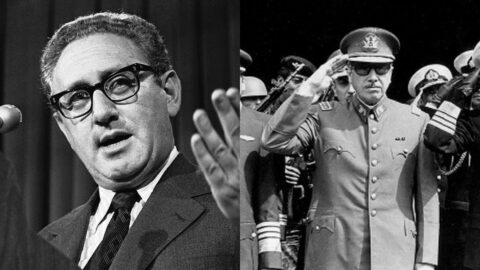
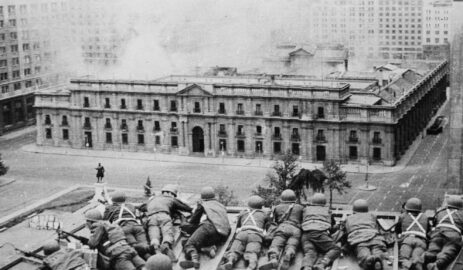
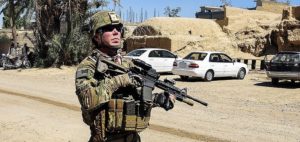
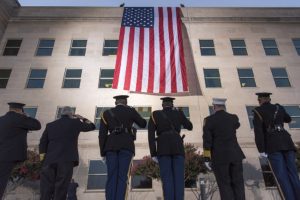
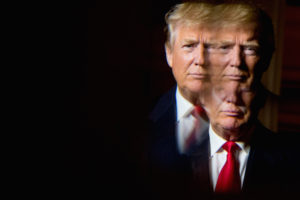
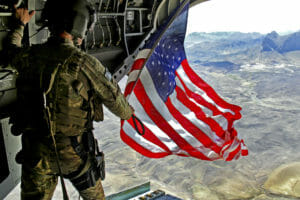
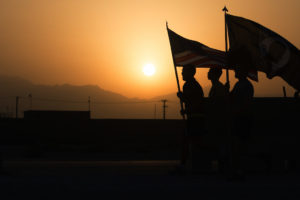
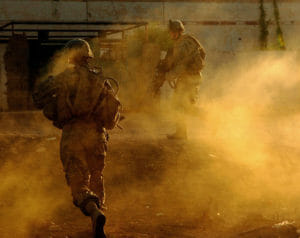
You need to be a supporter to comment.
There are currently no responses to this article.
Be the first to respond.